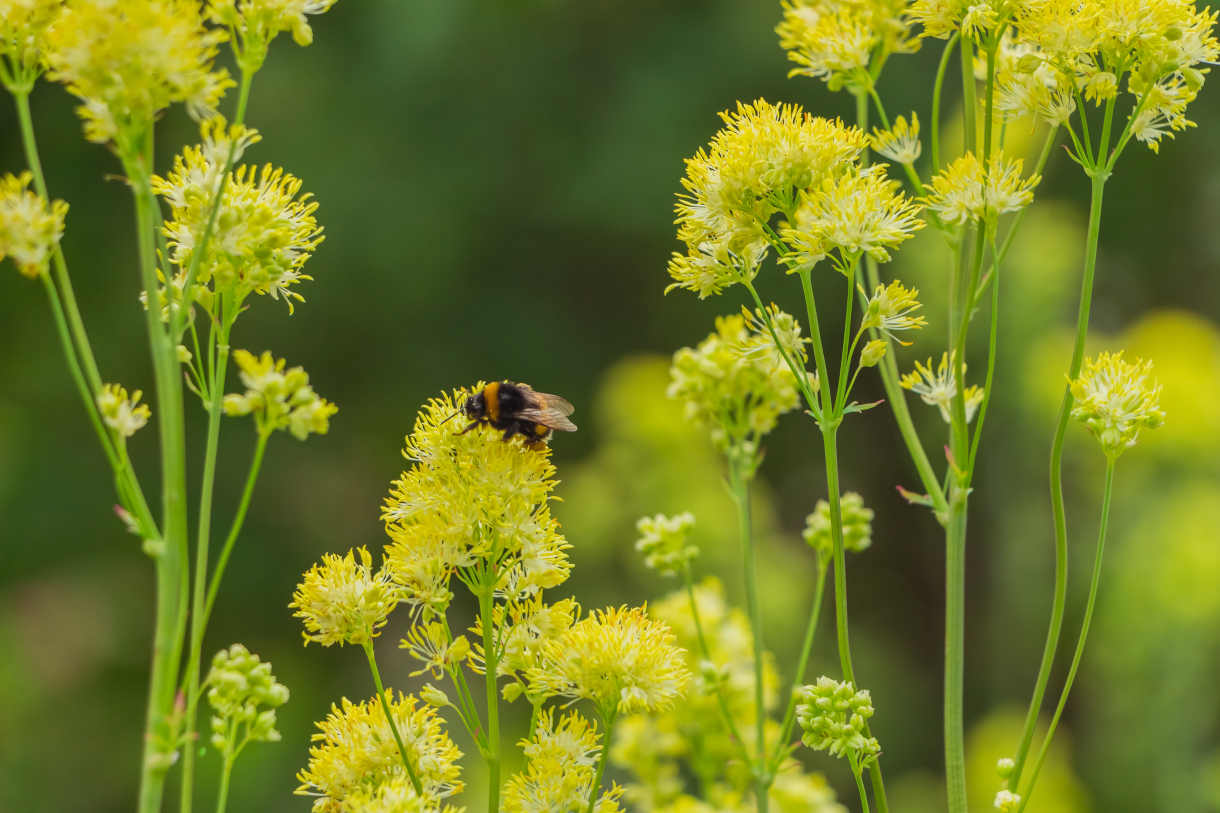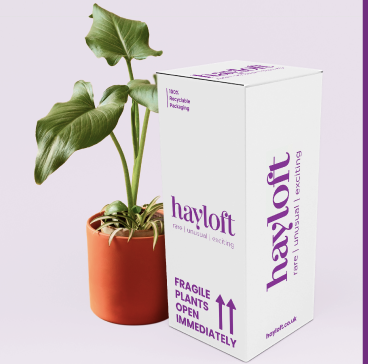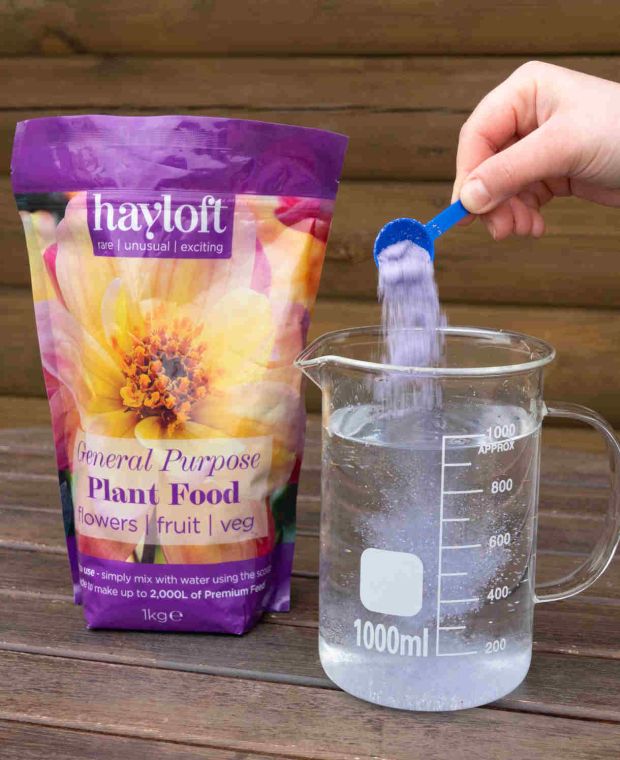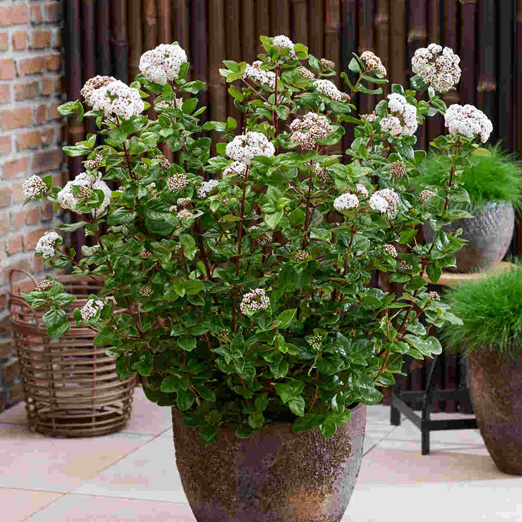How to grow Thalictrum
Also known as meadow rue, thalictrum is a member of the buttercup family grown for its attractive foliage and flowers. Though many gardeners may be familiar with a handful of border varieties, there are actually around 130 different species, ranging from low-growing, alpines to towering plants up to 3 metres tall. Most thalictrum hate drought, growing best in places where the soil remains moist such as dappled or partial shade. The exception to this is Thalictrum flavum subsp. glauca, which tolerates a hotter, drier spot, and the adaptable T. aquilegifolium which we’ve found copes well with a range of conditions.
The delicate foliage of thalictrum is often confused with aquilegia (in fact, it is known in some parts of America as ‘feathered columbine’), though once the airy heads of small, pale, flowers appear it becomes far easier to differentiate the two.
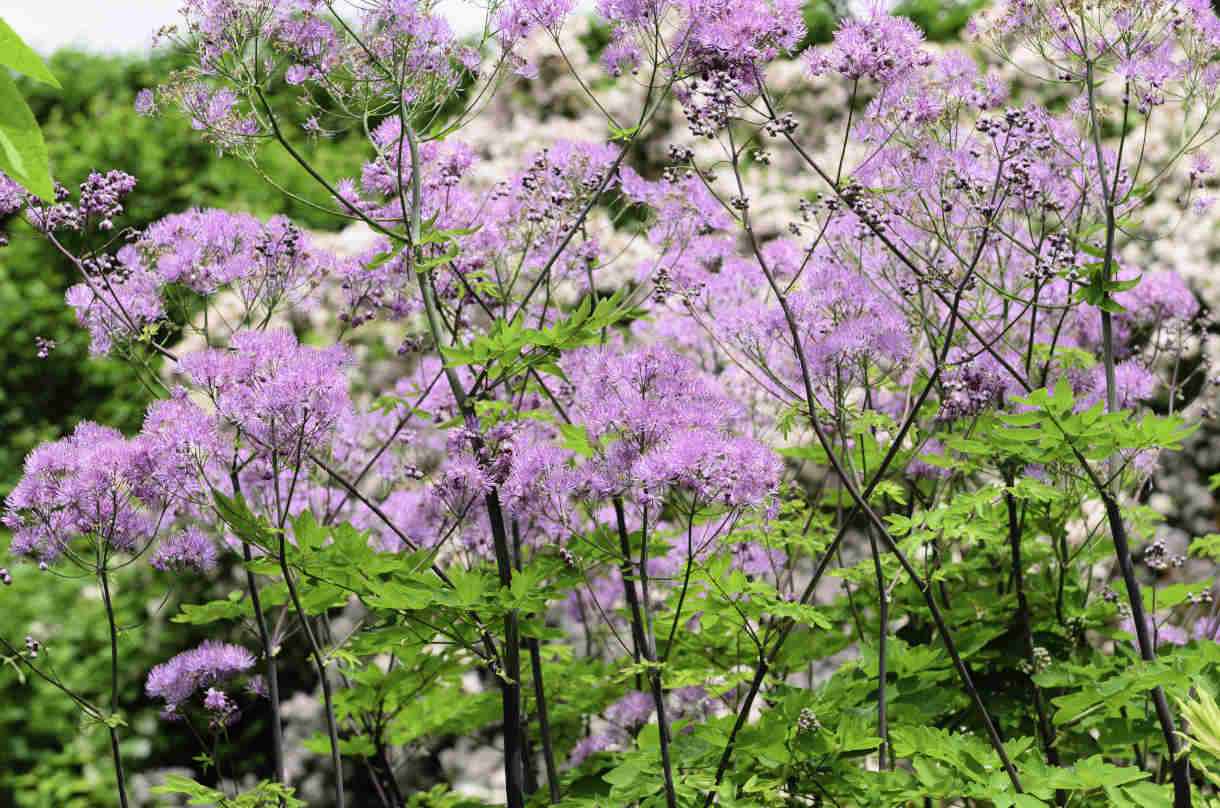
Zantedeschia is a genus of flowering plants from the family Araceae and is native to southern Africa. With a rich history dating back to the Ancient Romans, these deciduous or semi-evergreen perennials have been used as a symbol of celebration. Zantedeschia was Named after Professor Giovanni Zantedeschia, an Italian botanist.
There are two main forms of Zantedeschia: hardy and tender. Hardy forms of the plant can be grown outdoors, enjoy moist soil and full sun or partially shaded conditions - these are known as Arum lilies. Tender forms of Zantedeschia prefer being grown in containers or pots and should be brought inside over the winter - these are known as Calla lilies.
With tuberous flora in all colours from whites, yellows and oranges to deep reds and purples, Zantedeschias are not to be overlooked in any garden, as long as they have sufficient sunlight to grow in.
Ready to learn more about growing Zantedeschia? Read on for all there is to know...
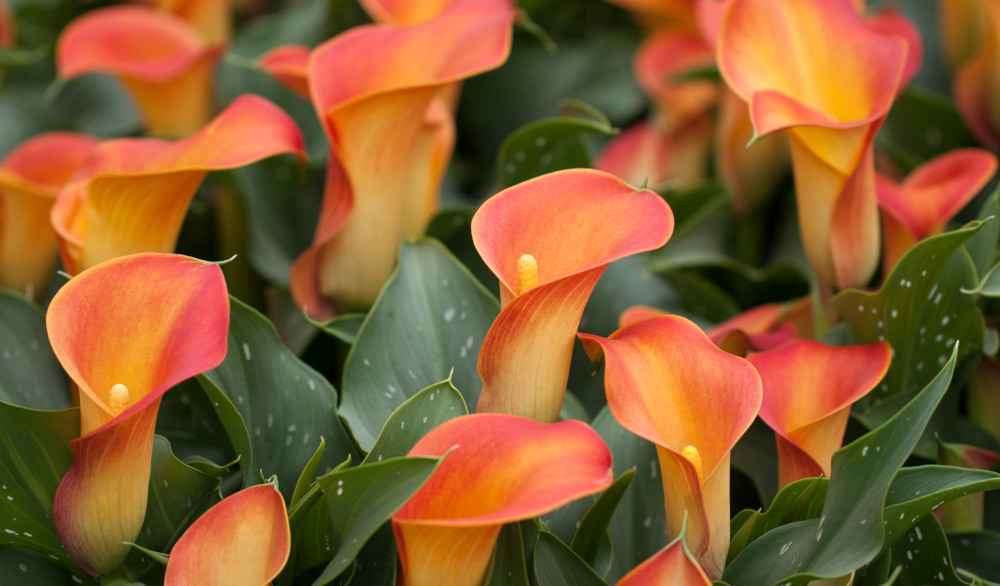
Key Information
Soil pH
Position
Hardiness

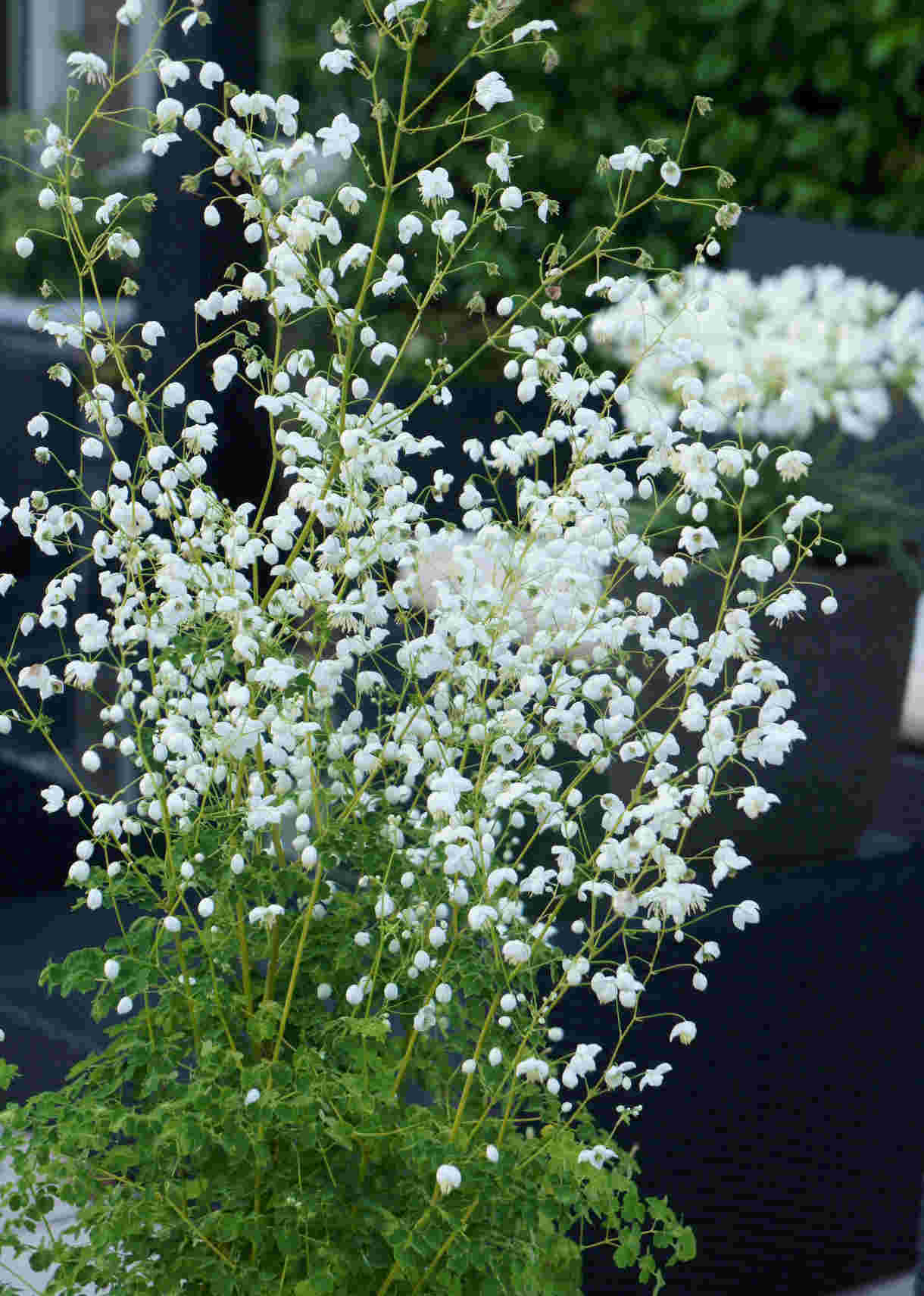
Where & when to plant Thalictrum
Position - Partial or dappled shade is usually recommended as this tends to be where soil remains consistently moist. However, full sun will be tolerated in a reliably damp spot.
See above for exceptions to this rule.
Soil - Moist and humus-rich
Flowering Period - Summer
Hardiness - Hardy. Can range from H5 (-10 to -15°C) to H7 (-20°C and below), depending on the species or cultivar.
Thalictrum is often sold in pot-grown form, though it is also possible to buy some varieties as bare roots during dormancy.
For best results, plant pot-grown thalictrum in autumn or spring. An autumn planting can be done by those gardening in mild conditions (and broadly speaking, this is the southern half of the UK). For those liable to cold, wet winters, it is best to wait until spring (generally the northern half of the UK, or those with very heavy soil). Planting can also be carried out in summer, though be prepared to water regularly.
Those bought as young 4cm plug plants are best potted up on arrival (one per 9cm pot filled with a well-draining potting mix is ideal). Grow these on in a cool, sheltered spot such as a coldframe, porch, or in the lee of a wall, waiting until they have beefed up a little before planting out in the garden as above.
For best results, we recommend bare root thalictrum be potted up as soon as it arrives, kept somewhere protected yet not too warm (a cool greenhouse, cold frame, or against a sheltered south-facing wall are all good places), then planted out in spring once it’s started into growth. You can plant it directly into the open ground as soon as it arrives, but in this naked, unestablished form, even hardy plants can be vulnerable to the damaging extremes of winter weather. Much safer to get it started in a protected environment.
When it comes to choosing a planting spot, start by looking into the eventual height of your chosen species. Tall forms are ideal for the middle to back of a border or a wild, woodland garden where, unless a sterile hybrid such as ‘Hewitt’s Double’, they may naturalise gently over a few years. Shorter varieties are useful for weaving colour through a shady rock garden or growing in a container.
How to plant Thalictrum
- For planting in the garden, dig the soil area removing any large stones and weeds and breaking up any lumps. Now is the time to mix in some organic matter such as manure or garden compost. Rake level and firm with your heels. Rake level again.
- Water plants well and allow to drain before planting.
- Dig a hole twice the width of the root-ball.
- Place the plant in the hole, ensuring the top of the root ball sits level with the surface of the soil. Too low and the plant may rot, too high and the roots can dry out.
- Backfill with soil and firm in gently with your foot.
- Soak well with water.
- Mulch around the base with well-rotted organic matter.
- For planting in containers (remember, smaller forms are best suited to this), go for a pot just a few centimetres than the current rootball and expect to repot into a slightly larger container each year. Ensure there are plenty of drainage holes in the bottom.
- If you are using a large or heavy pot, it can be a good idea to fill and plant it in situ to save yourself the trouble of moving once full.
- Use a good quality potting compost with a little horticultural grit mixed in and, if not already present (check the labelling on the bag) some slow-release fertiliser granules.
- Start by partially filling the pot with compost; enough so that when placed on it the upper surface of the root ball is about 3cm lower than the top of the pot.
- Fill around the plant with compost, firming down with your fingers then adding a little more so it is held tight.
- Pick up the container (if you can!) and lightly tap on the potting bench or ground a few times to help further settle the compost around the plant.
- Soak well with water.
- A mulch with horticultural grit will look attractive and help to prevent a ‘cap’ or crust forming on the top of the compost (something container plants can suffer due to the artificial nature of their watering).
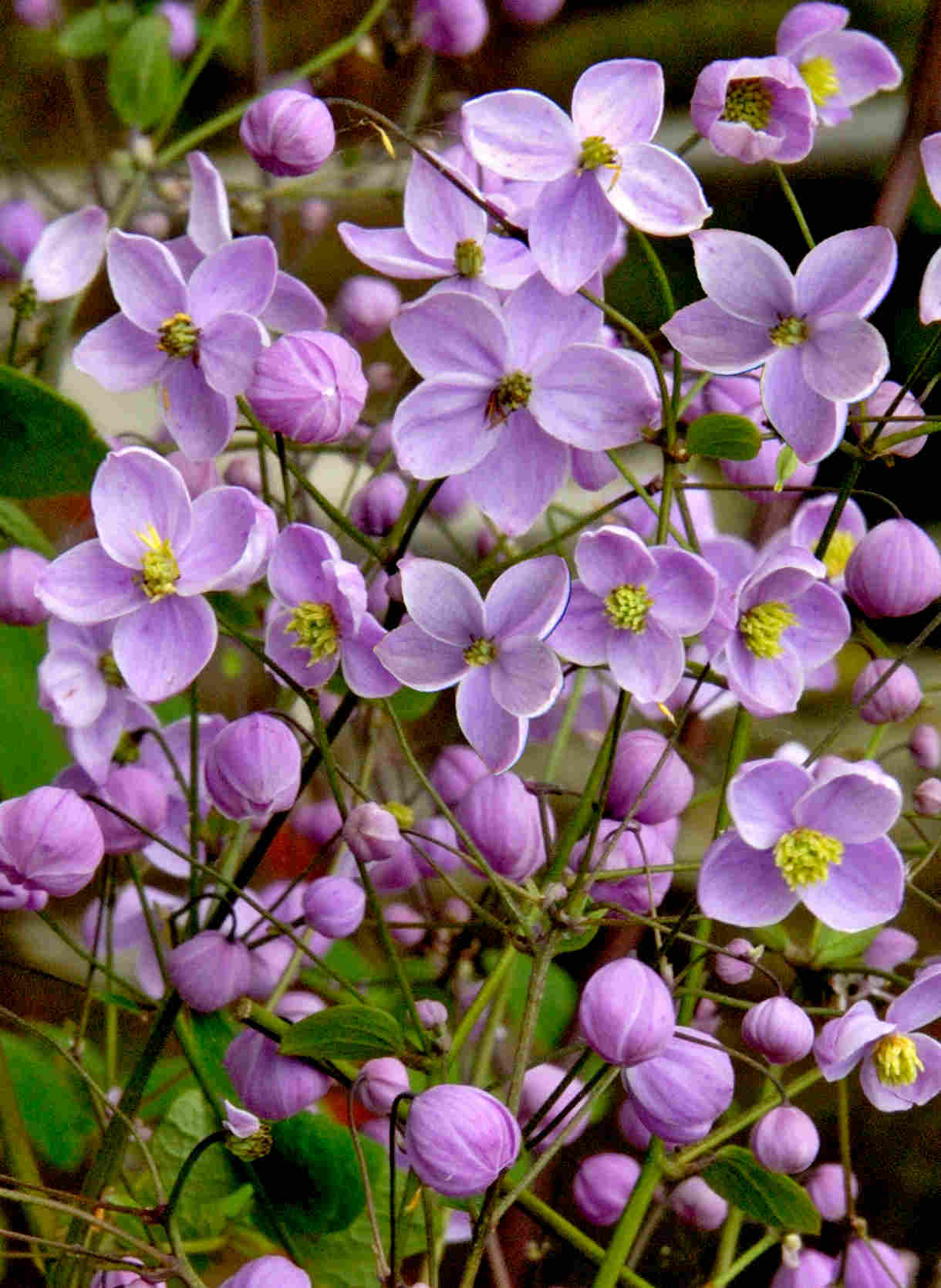
What to plant with Thalictrum
Thalictrum pairs beautifully with other billowing, naturalistic companions such as Verbena bonariensis, cephalaria, aquilegia, digitalis, cirsium, and dierama. Add fullness and movement with ornamental grasses including miscanthus, stipa, and pennisetum.
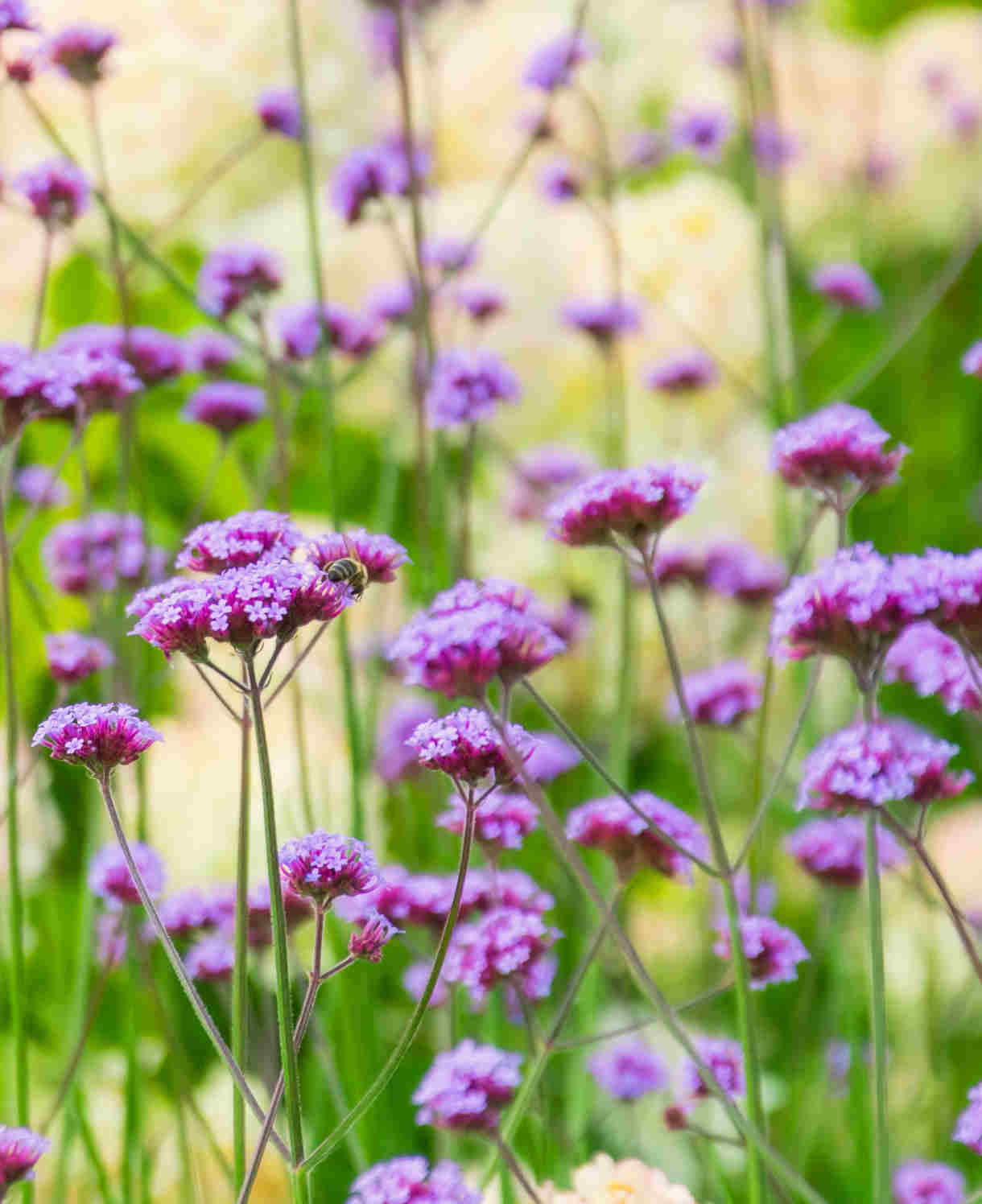
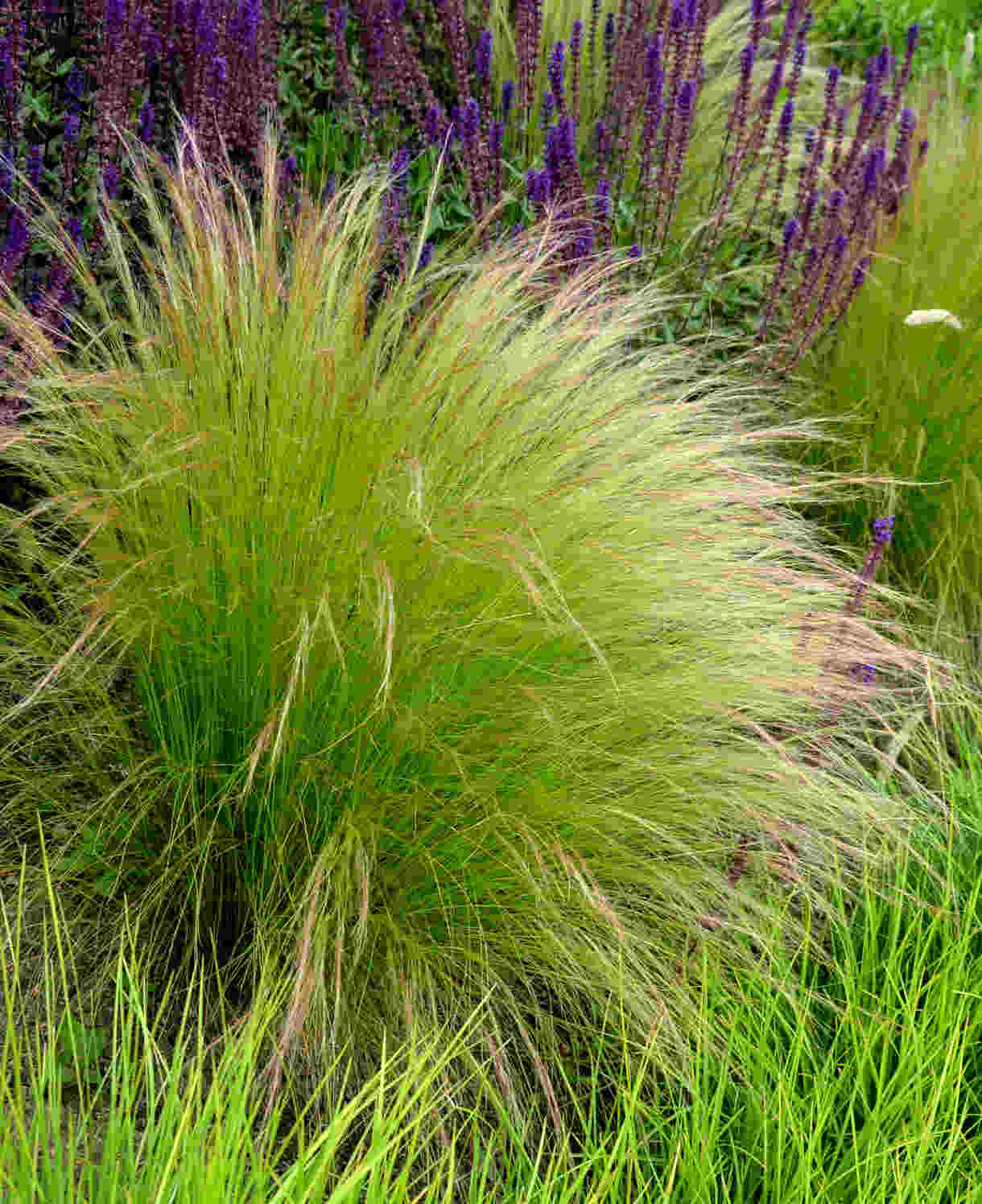
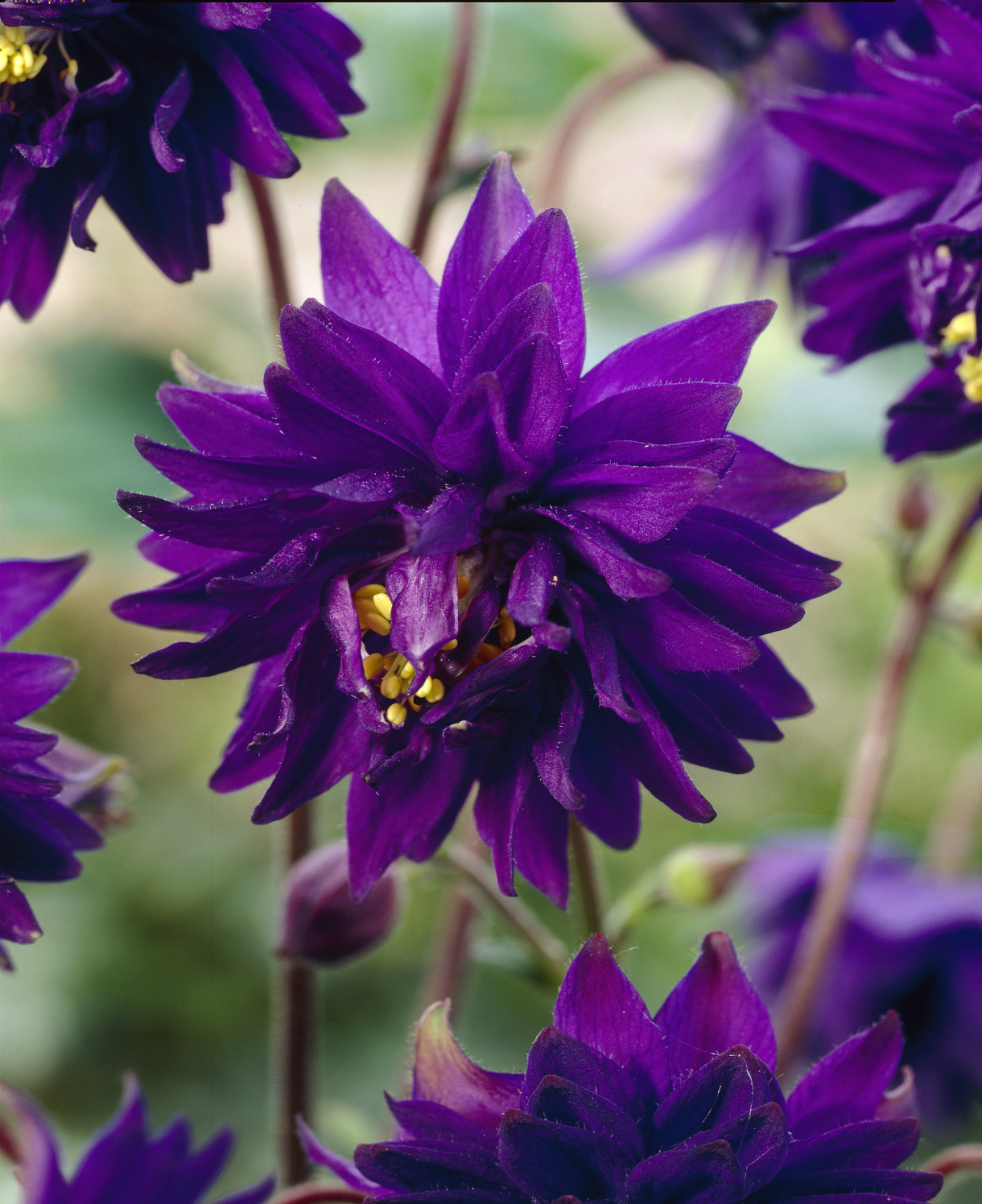
How to care for Thalictrum
Pruning and Deadheading
Deadheading may extend the flowering period slightly: simply cut flowered stems down to the ground once they have finished blooming. This is also a good way to prevent unwanted self-seeding.
The foliage can be left intact, though it will naturally yellow and die back for winter. Cut down to the ground whenever you like between the end of the growing season and early spring.
Watering
Thalictrum enjoys reliably moist conditions and will not grow well in soil or compost which becomes dry (apart from those more tolerant species stated above). Choosing an appropriate planting spot is therefore key to success, followed by a watchful approach to watering as follows.
Give your thalictrum a good soaking on initial planting, and then again regularly throughout its first growing season in the ground. After this, water in any prolonged periods of hot dry weather, and apply an annual mulch to boost moisture in the soil. More on this next.
Feeding
On healthy, fertile soil, an annual mulch of organic matter should provide sufficient nutrients for your thalictrum. This might be a layer of manure, leaf mould, or garden compost. Mulch has the added benefit of suppressing weeds and locking in moisture and is best done in autumn or spring.
If your plant looks in need of an extra boost or you garden on poor soil, applying a general purpose feed such as blood, fish and bone to the surface of the soil and lightly working in (known as a ‘top dress’) can reap benefits. Do this in spring, and then again in midsummer if needed.
Permanently container-grown plants rely more on the gardener for nutrition. Get off to a flying start by making sure you use a good quality compost containing slow release granules. These usually provide enough nutrients for around 6 weeks, after which we recommend a dose of balanced liquid feed every 3 to 4 weeks.
Cold Protection
Thalictrum is hardy enough to withstand even a cold UK winter without the need for additional protection.
Pests and Diseases
Thalictrum is largely disease free, and, like many plants in the buttercup family, deer and rabbits notably avoid it. The one thing you may see cropping up from time to time is powdery mildew. This fungal disease appears as a white, powder-like coating on foliage, and is likely to be caused by drought stress.
A little TLC usually rectifies the problem. Simply prune off and dispose of any affected leaves, give the plant a good soak (avoiding water on the foliage if possible), and apply a generous mulch of well-rotted organic matter. It can also be worth thinning out surrounding plants to improve airflow. Do not be tempted to give an extra feed, as this will generate an excess of soft, new growth which is particularly susceptible.
How to propagate Thalictrum
The quickest and easiest way to propagate thalictrum is by division in spring, best carried out just as the plant starts back into growth. As well as generating new plants this maintains vigour in the parent plant, and can be done every 2 to 3 years.
1. Choose a day when the soil is not frozen or waterlogged.
2. Dig the plant out of the ground and shake off any excess soil.
3. Separate into sections using either swift, cutting blows with a sharp spade, or two forks inserted back-to-back with tines touching, handles then pushed together to prise the plant apart.
4. Discard old, damaged, or surplus pieces, keeping healthy, vigorous material.
5. Replant decent-sized pieces where desired, and any smaller bits can be potted up.
6. Water well until fully established.
7. Note that thalictrum divisions can be slow to re-establish. Don’t write them off!
* Many plants carry Plant Breeders Rights and cannot be propagated for commercial purposes.
Common Thalictrum Questions
· Does thalictrum need support?
Taller species and cultivars benefit from some form of support, particularly if grown in a windy location. A network of pea sticks gives attractive results (these are twiggy sticks inserted into the ground – often hazel, though can be from any deciduous tree or shrub). Closely grown neighbouring plants can also act as effective buttresses, as well as hiding any unsightly, yellowing foliage later in the season.
· Is thalictrum invasive?
While many species and cultivars will self-seed (though some are sterile and incapable of setting seed), they tend to do so gently and not in a way that could be considered invasive.
· Is thalictrum poisonous?
Thalictrum can be toxic to dogs (particularly the roots) and may also cause irritation to skin when handling.
